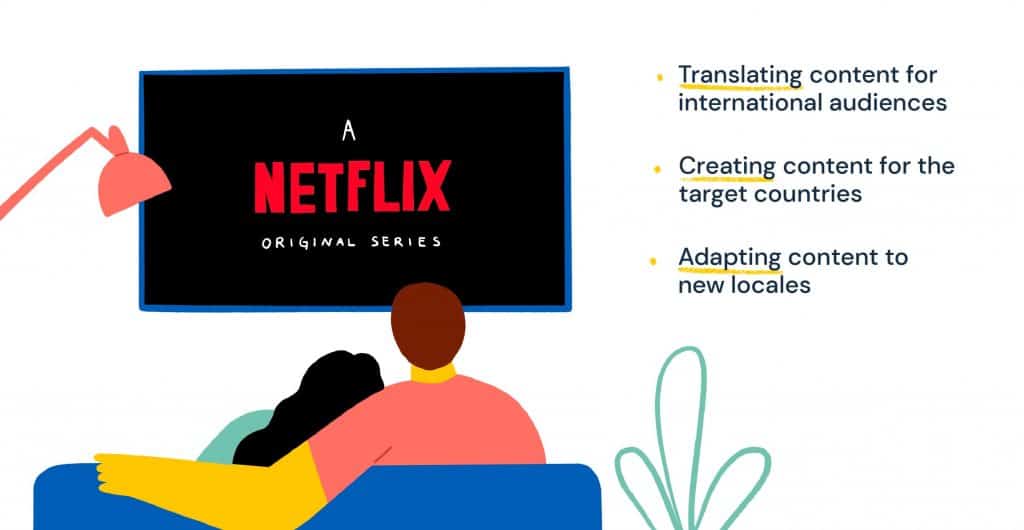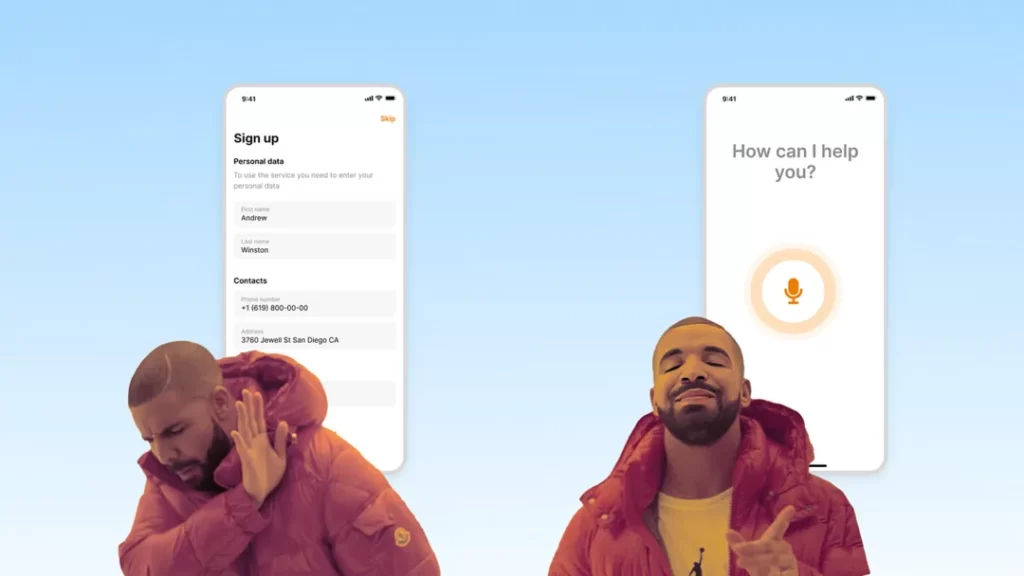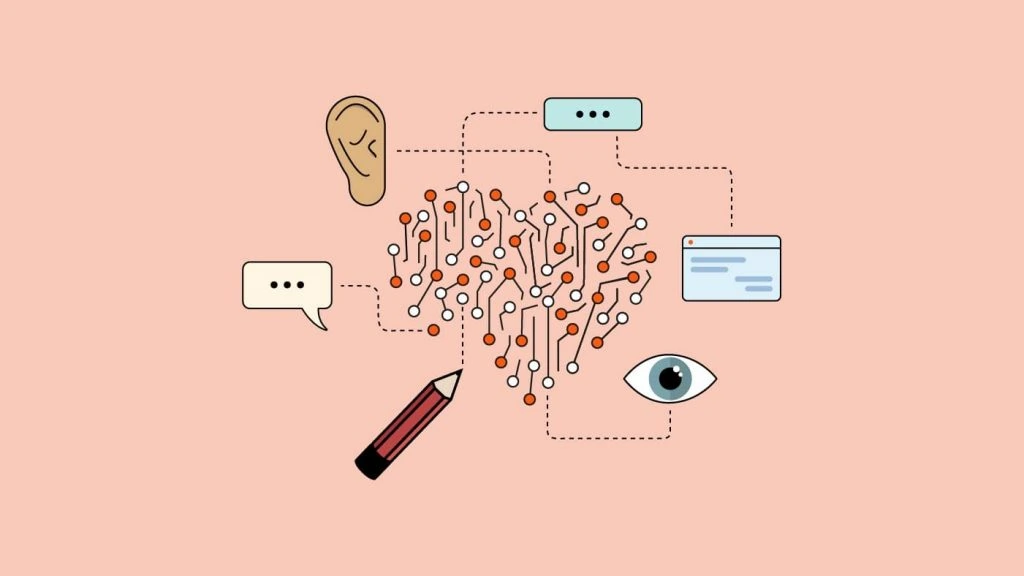How AI is Changing User Experience
Artificial intelligence (AI) is revolutionising user experience (UX) across industries. As AI capabilities advance, companies are harnessing the power of machine learning and automation to create more personalised, intuitive, and frictionless experiences. This transformation is only just beginning. AI promises to be the next significant leap forward in UX.
Table of Contents
AI Enables Hyper-Personalisation
AI allows companies to understand users and tailor experiences specifically to them like never before. With massive behavioural data and complex algorithms, AI can build detailed user profiles and predict preferences.

Tailored Content Recommendations
Platforms like Netflix, Spotify, and YouTube leverage AI to study viewing and listening patterns. They can then recommend highly relevant movies, songs, or videos to each individual. This creates a more engaging, personalised experience.
- Over 80% of what people watch on Netflix comes from algorithmic recommendations.
- Spotify's Discover Weekly playlist drives over 40 million streams per week
AI takes personalisation even further with adaptive content – altering what you see based on real-time preferences. News feeds and search results reorder themselves as the AI model continuously updates.
Personalised Product Recommendations
Ecommerce sites like Amazon use AI to convert visitors into buyers. Algorithms track browsing data, purchase history, reviews and ratings to suggest products you likely want to buy. The results are impressive:
- 35% of Amazon purchases come from product recommendations
- 75% of what people watch on Netflix comes from suggested content
Product recommendations increase sales, conversion rates, and basket sizes. They also enhance satisfaction by saving people time searching.
Frictionless Experiences

AI eliminates points of friction to create seamless, effortless experiences. This builds brand loyalty among customers.
Streamlined Checkouts
Retailers are using AI chatbots and virtual assistants to enable voice-activated purchases. Rather than manually entering payment details on a mobile keyboard, shoppers can simply speak naturally to complete the transaction.
This frictionless commerce will soon become widespread. By 2024, an estimated 22% of smartphones will be equipped with AI assistants.
Automated Customer Support
AI chatbots are being deployed for customer service queries. Unlike rigid menu-driven IVRs, these bots have natural conversations. They understand context, complex questions, and user intents.
Key stats:
- 30% of customer support operations will integrate AI in 2023 (Gartner)
- $439 billion potential cost savings from AI customer support in 2023 (Juniper)
With automated Tier 1 query handling, human agents can focus on high-value complex issues, improving efficiency and quality.
Contextual Recommendations
AI can dynamically serve users' relevant recommendations by considering their current context. For example, based on someone's recent search for Italy vacation packages, a travel app might promote local restaurant offers during dinner time.
Contextualisation leads to better targeting, higher engagement, and reduced irrelevant content.
More Intuitive Interfaces

AI is powering interfaces that feel more natural and intuitive to users. Systems can now understand human inputs like speech, images, video and sensor data.
Conversational Experiences
AI chatbots and voice assistants enable conversational interfaces. Using natural language processing (NLP), they understand free-form human language, grasp meanings and intents, and respond intelligently.
This drives intuitive experiences across domains:
- Enterprise IT support – Technicians offload frequent simple queries to chatbots, boosting productivity. The AI handles tier-1 support issues like password resets.
- Healthcare – Doctor chatbots guide patients to appropriate medical advice or providers based on symptoms.
- Ecommerce – Shopping assistants answer product questions and handle orders via voice commands.
Computer Vision Applications
Computer vision is the ability of AI systems to identify, categorise, and understand images, photographs and videos. Use cases include:
- Social media – Automatically tagging people and objects in images
- Medical imaging – Detecting cancerous cells and diagnosing from X-rays faster than radiologists
- Surveillance – Identifying safety threats in public areas
Computer vision gives machines human-like perceptual abilities, removing the need for manual image tagging or complex search queries.
AI Assistants
Smart AI assistants like Siri, Alexa and Google Assistant handle various tasks: setting reminders, controlling smart devices, answering questions, etc.
Advancements in NLP allow more complex conversational commands. You could ask your assistant to read your unread emails or texts aloud while driving. Or get a summary of the day’s news headlines from your preferred sources.
The convenience of delegating tasks to an always-available assistant enhances the overall user experience.
Better Design through Generative AI

A class of AI called generative AI can produce original designs, copy, images, audio and more from scratch. This makes designers exponentially more productive.
AI-Generated Design Mockups
With prompt engineering, generative AI can automatically create website page layouts, app UIs, product sketches, and other design artefacts.
Instead of laboriously assembling visual components, designers simply describe what they want in plain English. The AI generates options instantly.
After reviewing outputs, designers can fine-tune prompts to get iterations closer to their vision. This rapid ideation leapfrogs traditional design process constraints.
Dynamic Content Creation
Brands now use AI to instantly generate product descriptions, ad copy, emails, social posts and other content. The AI adjusts messaging based on audience demographics, geographic targeting, and campaign objectives defined by the marketer.
Benefits include:
- 10x higher output rate than human writers
- Consistently on-brand, on-message and on-target
- Built-in A/B testing to optimise engagement
This powers more relevant, personalised content at scale.
Enhanced Creative Exploration
Generative AI removes creative barriers. Designers can explore radically different directions unhindered by manual effort limitations.
For example, graphic designers can get an AI to render a logo in 50 unique styles in seconds – works of art they likely wouldn’t have conceived alone. Augmenting human creativity this way leads to stronger, more unique designs.
Case Studies Demonstrating AI's UX Impact
- How Stitchfix created personal styling for millions using AI recommendations
- How Alegra reduces customer service costs through conversational AI
Stitchfix’s Data-First Fashion Experience

Fashion retailer Stitchfix pioneered using AI, data science, and algorithms to personalise the shopping experience.
Rather than browsing items on a website, customers fill out a style profile. An algorithm then selects pieces suited to them from over 1000 brands. A personal stylist reviews the selections and can swap in alternatives—the personalised box of items ships to your door to try on. Keep what you like, and return the rest.
This curated experience outperforms generic recommendations. Stitchfix knows people better than they know themselves. The AI has seen style profiles, keeps, and returns from millions of customers. It understands human preferences more holistically than an individual.
The data-first strategy works. Stitchfix has over 4 million users and has shipped 100 million boxes. Their average client return rate is around 90%, exceeding the industry standard.
Alegra Cuts Support Costs Through Conversational AI
Swiss consumer goods giant Alegra deployed artificial intelligence chatbots to make customer support more efficient. Handling tier-1 queries such as order tracking, users now engage with a conversational bot instead of a human agent.
The AI assistant understands requests in natural language and then fetches data from relevant systems behind the scenes. It handles the majority of routine cases automatically without needing human involvement.
Benefits include:
- Dropped call volume by 40%, enabling significant support staff size reductions
- Boosted CSAT score from 73% to over 98%
- Saved an estimated 30-50% on customer support costs annually
Early success triggered a rollout across all markets and languages. Additionally, Alegra now uses the AI for automated order confirmations, shipping notifications and personalised promotions.
These use cases demonstrate ROI and business value from deploying AI. The adoption of the technology will thus accelerate faster.
Key AI Technologies Driving Advancements in UX

- Natural language processing (NLP) – Enables conversational interfaces
- Generative AI – Produces design content automatically.
- Predictive modelling – Personalisation and recommendations
- Computer vision – Processing visual inputs and contexts
Natural Language Processing
Natural language processing (NLP) focuses on understanding, interpreting, and generating human languages. AI assistants use NLP to have meaningful dialogues.
Critical NLP applications in UX include:
- Sentiment analysis – Detecting emotional tone, identifying angry/happy customers
- Intent recognition – Grasping what users want to achieve in conversations
- Contextual awareness – Tracking context to provide relevant recommendations
Ongoing NLP advances will make AI conversations feel more natural and human-like.
Generative AI
Generative AI can create original artefacts like images, videos, code, designs or text given a descriptive prompt.
Powerful machine learning models like DALL-E 2 and GPT-3 have mastered visual and language concepts. By recombining these building blocks, they can render or write just about anything.
Combining NLP and generative AI will enable:
- Lifelike voice avatars with unique personalities
- Automated video creation from simple storyline prompts
- Immersive video game worlds generated from textual narratives
This explosion of original, customisable content will drastically enhance engagement.
Predictive Modelling
Predictive modelling analyses historical data to forecast unknown future events. Machine learning algorithms uncover subtle patterns and correlations.
Media platforms apply predictive modelling to suggest personalised content. Ecommerce sites use it to recommend relevant products. Marketers deploy lookalike modelling to find potential new customers.
Ongoing developments in predictive AI will unlock new levels of personalisation and contextualisation.
Computer Vision
Computer vision replicates human visual perception functions. AI systems can now successfully classify, detect and segment visual inputs across various formats.
Computer vision powers use cases like:
- Photo editing apps with granular manipulation abilities
- Medical diagnosis from medical scans and tests
- Surveillance systems that can identify threats and suspicious activities
With deep learning advancements, computer vision will approach human-level mastery of identifying visuals in context.
Emerging Opportunities and Challenges
- Ethical risks of excessive personalisation
- Potential job automation impacts
- Responsible guidelines for generative AI use
Avoiding Hyper-Personalisation Pitfalls
While personalisation provides value, excessive tuning to individual tastes risks limiting exposure to diverse ideas. Platforms should balance relevance with some serendipity.
Obstacles also exist in accurately inferring user intent from data. Models still make erroneous assumptions, leading to inappropriate or even harmful recommendations. Eliminating unfair bias requires vigilance.
The personalisation wave calls for responsible implementation built on transparency, choice and accountability principles. Users require control over their data.
Job Automation's Societal Impacts
Widespread AI adoption can negatively impact specific jobs and industries. Customer support roles face shrinking demand as chatbots take over routine inquiries. Similarly, AI tools threaten to disrupt medical diagnosis and creative graphic design sectors.
While new jobs may organically emerge from technology changes, structural unemployment presents a policy challenge. Resources and retraining programs for displaced workers become urgent priorities.
Overall, the labour market transformation requires supportive public-private collaboration. Policies should help workers transition to emerging opportunities.
Generative AI Requires Safeguards
The core risk with generative AI models stems from control. Very few people currently understand or oversee their development. Yet they create output consumed by billions daily.
Without governance guardrails, generative models harbour hazards like:
- Potentially dangerous or illegal content
- Toxic biases that marginalise protected groups
- Mass piracy of copyrighted assets
Thoughtful constraints aligned with societal values are necessary to research, deploy and monitor these rapidly advancing systems.
The Future of AI-Enhanced UX

- Mainstream adoption of VR/AR powered by AI capabilities
- Greater democratisation through no-code platforms
- Quantum computing unlocks next-level personalisation
The Promise of Smart VR/AR Experiences
Virtual and augmented reality promise more immersive, interactive experiences by overlaying digital artefacts onto the physical environment. VR transports users into simulated 3D worlds, while AR brings virtual objects into your surroundings.
AI will take VR/AR mainstream by tackling existing barriers to mass adoption – ease of use, relevance, and utility. AI assistants can simplify control schemes through conversational interfaces. Machine learning algorithms will dynamically render relevant VR content customised to each moment and situation. Enterprise use cases spanning design, productivity, and collaboration will drive initial business traction.
Over the next decade, innovative VR/AR could dominate digital experiences – the next paradigm shift after mobile.
Empowering Everyone through No-Code AI
Currently, only those with deep technical skills can harness AI's potential. But no-code platforms are democratising access for non-programmers. Anyone can leverage state-of-the-art algorithms via simple drag-and-drop interfaces.
No-code AI enables the creation of chatbots, analysing data, building models and more without coding. This allows smaller businesses and teams to benefit from AI capabilities previously only accessible to large tech giants.
Democratisation also mitigates AI-related job losses through reskilling workforces into emerging roles managing no-code systems.
Quantum Computing Unlocks Hyper-Personalisation
Quantum promises exponential leaps in computing power over conventional systems – calculating in seconds what today’s supercomputers would take millennia to solve.
In UX, quantum machine learning models will crunch astronomically more data points to predict individual interests and intents with ultra-granularity. Real-time personalisation will know precisely what you want at every moment.
Quantum AI remains nascent and is awaiting full-fledged quantum hardware advancements. But future potential glimmers of 1:1 individual-level customisation portend genuinely “smart” experiences.
Conclusion
AI-infused user experiences reduce friction while increasing personalisation and intelligence. Conversational interfaces, hyper-relevant recommendations, automated content creation and other emerging capabilities are transforming digital touchpoints across industries.
Yet also accompanying the turbulence are concerns regarding privacy, bias, job impacts, and responsible progress. The incredible opportunities ahead require equally thoughtful governance of AI's ascent.
Through prudent guardrails enacted today aligned to ethical principles, the world can cooperatively maximise this technology for social good – enabling more prosperous, more fulfilling digital experiences that improve billions of lives.
FAQs on How AI is Changing UX
How is AI used in UX design?
AI powers features like personalised recommendations, conversational interfaces and generative design tools. It provides insights to enhance usability and conversion. AI also tests variations to optimise metrics.
What are the benefits of AI in UX?
The main perks are greater personalisation, reduced friction through automation and intelligent assistants, expanded design capabilities via generative AI, and data-driven decision-making.
What AI skills are most valuable for UX designers today?
Helpful capabilities include generative design prompt engineering, optimising chatbot conversation flows, interpreting analytics dashboard insights, basic machine learning/data science skills for A/B testing, and keeping updated on NLP advancements.
Could AI ever fully replace UX designers?
While AI will significantly augment designer abilities, the uniquely human skills of creativity, emotion, and judgement seem difficult to automate completely. However, AI will drastically change the role, reducing tactical execution to manage AI systems.
What are the risks or challenges of using AI in UX?
The main risks include poor data quality leading to inaccurate model outputs, potential biases creeping into automated decisions, privacy concerns with excessive personal data collection, and job impacts from automation of certain functions.
